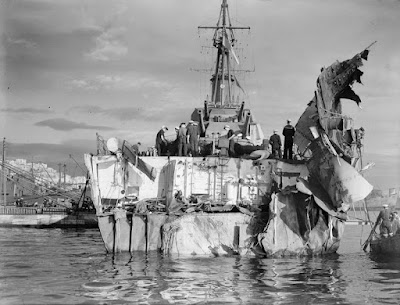Shortly after leaving Portsmouth to begin her voyage to the Americas,where she was to host the Atlantic Future Forum,Her Majesty's Ship Prince of Wales suffered a “significant technical fault”,rumours that the crew forgot to grease the starboard propeller shaft because they were busy planning for transgender day of remembrance have not yet been confirmed but herein we shall consider how An Independent Navy For An Independent Nation shall deal with emergency repairs.
Each class of vessel in an Independent Navy For An Independent Nation shall have a level of protection commensurate with it's role and redundant systems designed with benign modes of failure,for example a propeller blade shall be designed to fail before the propeller hub,the hub shall be designed to fail before the shaft and so on,thereby reducing the probability and severity of failures,whether due to enemy action,technical failure or accident,whilst also reducing the urgency of repairs.
As far as is practical,vessel classes shall share common hulls and systems,for example,the Falkland class destroying frigate's twin turbine propulsion system shall be the production version of the prototype installed on the trials frigate Experiment and shall also be half of the four turbine propulsion system of the Africa class flying ships,Agincourt class landing ships,Halifax class hospitalling ships and Royal class replenishing ships,thereby increasing production quantities and reducing the cost of design,construction,maintenance and repair,reducing the cost of keeping Royal Dockyards,depotting vessels and repair ships stocked with parts and also reducing the cost of sustaining secure domestic manufacturing.
All vessels in An Independent Navy For An Independent Nation shall be refitted once every four years in their home port,wherever practical,and in the case of many ships this shall be the proposed new Royal Dockyard on the North Sea which shall have the capacity to berth,maintain and repair dozens of vessels as large as the Antaeus class depoting ships,which shall be amongst the largest vessels ever built due to their need to carry hundreds of thousands of tons of fuel,ordnance,parts,food,drink and other dry stores on a modest draught.
On distant stations the Assistance class icebreaking tugs (vessels designed to do things that others are not designed to do) shall allow the one of two naval repair parties which may be continuously deployed under the proposed readiness cycle to maintain and repair vessels away from the Royal Dockyards,in addition to providing rescue,recovery,replenishment,salvage,survey and icebreaking capabilities.
The four hundred ton bollard pull Racer class rescuing tugs,all but two of which shall be routinely chartered to Her Majesty's Waterguard Service,shall provide both administrative and emergency towing to even the largest crippled vessels,but vessels which cannot be towed shall be recovered by Behemoth and Leviathan,a pair of self propelled docks based on the same fifteen knot hull form and machinery as the Antaeus class which shall usually be used for painting and bottom work.
If one of the proposed Africa class flying ships had suffered damage to a shaft,she would have been able to continue operating on the other three,then,when it was convenient to repair the damaged shaft spares would likely be available at the Royal Dockyards or aboard Antaeus class depoting vessels or Assistance class icebreakers and if not then one would soon be available from the factory as they would be in continual production to equip the large number of vessels built with identical shafts,the new shaft could be installed in a dry dock at one of the Royal Dockyards,by a repair party in any anchorage which may be accessed by Behemoth or Leviathan,or even at sea in calm weather,and in an emergency shafts could even be removed without dry docking.







1 comment:
In today’s fast-paced world, businesses and homeowners alike rely on well-functioning facilities to ensure daily activities run smoothly. From shopfronts and shutters to glazing and doors, every component of a property plays an important role in safety, security, and efficiency. However, unexpected breakdowns or damages can happen at any time, often when least expected. This is where BFSSLtd steps in as a trusted name in the industry, offering quick, reliable, and professional emergency repairs that restore safety and peace of mind.
Post a Comment